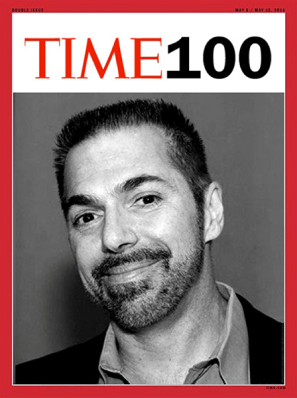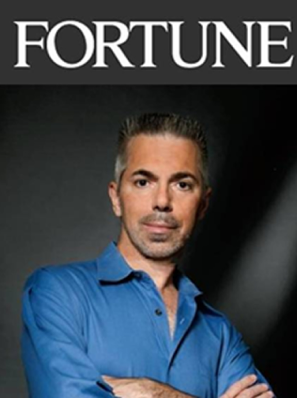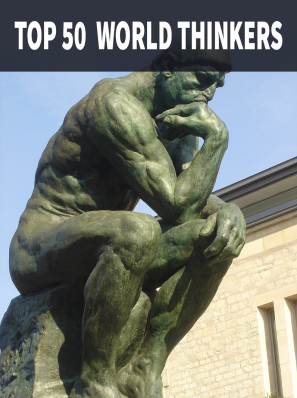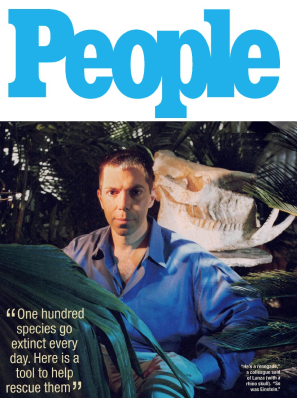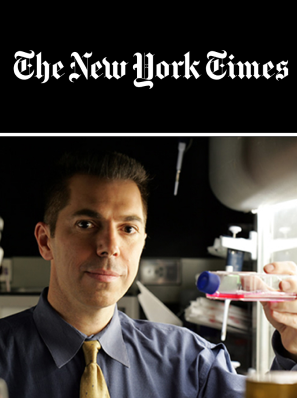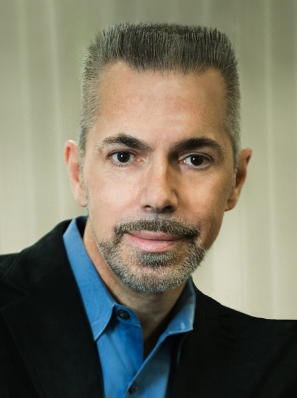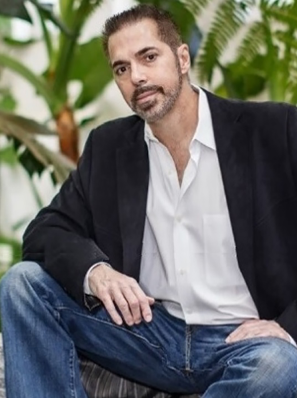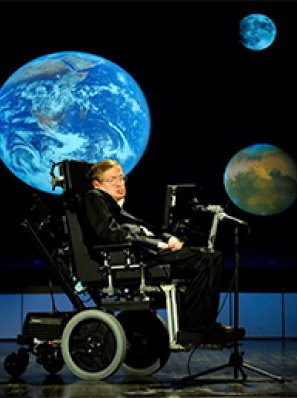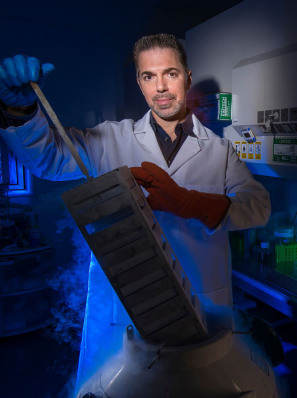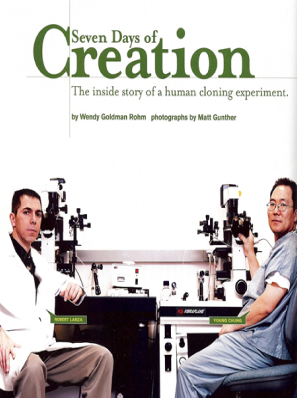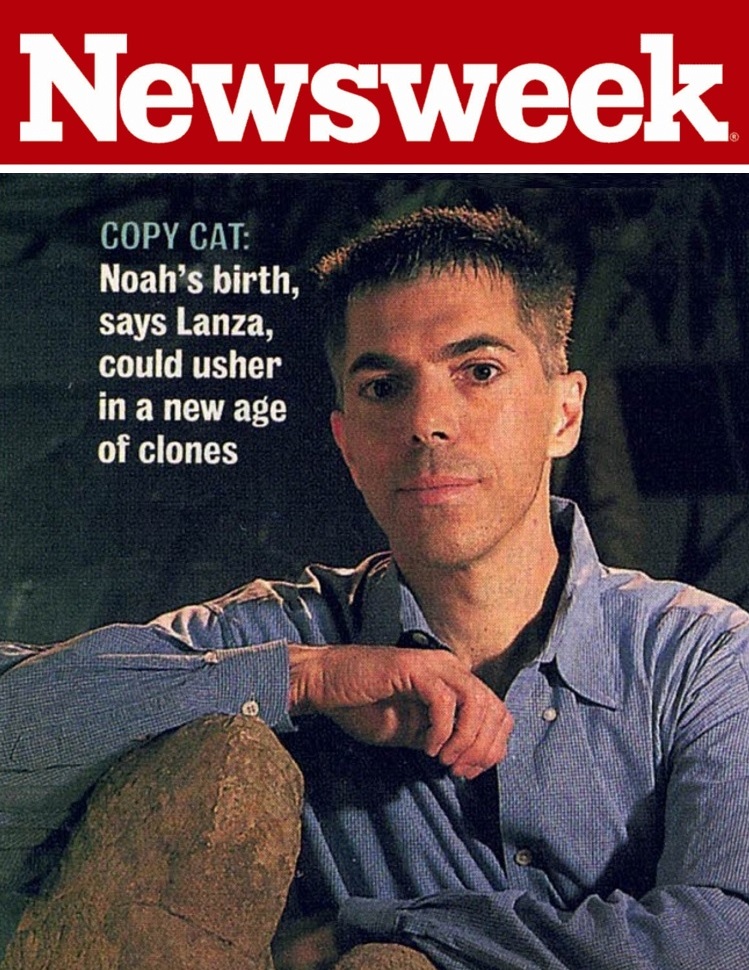What hurdles stand between the promise of human stem cell therapies and real treatments in the clinic?
By Robert Lanza and Nadia Rosenthal
Stem cells raise the prospect of regenerating failing body parts and curing diseases that have so far defied drug-based treatment. Patients are buoyed by reports of the cells’ near-miraculous properties, but many of the most publicized scientific studies have subsequently been refuted, and other data have been distorted in debates over the propriety of deriving some of these cells from human embryos.
Provocative and conflicting claims have left the public (and most scientists) confused as to whether stem cell treatments are even medically feasible. If legal and funding restrictions in the U.S. and other countries were lifted immediately, could doctors start treating patients with stem cells the next day? Probably not. Many technical obstacles must be overcome and unanswered questions resolved before stem cells can safely fulfill their promise
For instance, just identifying a true stem cell can be tricky. For scientists to be able to share results and gauge the success of techniques for controlling stem cell behavior, we must first know that the cells we are studying actually possess the ability to serve as the source, or “stem,” of a variety of cell types while themselves remaining in a generic state of potential. But for all the intensive scrutiny of stem cells, they cannot be distinguished by appearance. They are defined by their behavior.
Most versatile are embryonic stem (ES) cells, first isolated in mice more than 20 years ago. ES cells come from the portion of a very early-stage embryo that would normally go on to form three distinctive germ layers within a later embryo and ultimately all the different tissues of the body. ES cells retain this potential ability to produce any cell type in the body, making them pluripotent.
Most of the existing human ES cell lines in the world were derived from unused embryos created for couples seeking in vitro fertilization (IVF). Researchers working with these cells have found that they usually recover after freezing and thawing and can differentiate into assorted cell types in a culture dish. But it is becoming clear that not all human ES cell lines are the same.
Seeking Stemness
Some lines will differentiate into only certain cell types; others grow sluggishly in culture. To ensure that these cells are pluripotent before using them in research, two possible tests, already common in nonhuman ES cell studies, have been proposed by a group of American and Canadian biologists hoping to set standards for experimentation with human ES cells. One would involve injecting the ES cells into an animal’s body tissue. If they form a teratoma–a distinctive tumor containing cell types from all three embryonic layers–their pluripotency is proved. Another way to test putative ES cells is to mark them, then inject them into a developing animal embryo. When the animal is born, if the marked cells turn up in all its tissues, the cell line is deemed pluripotent. But testing human embryonic stem cells in this manner would create a chimeric animal with human DNA throughout its body, a prospect many find ethically troubling. What is more, passing the latter test does not always guarantee that the cells will differentiate in the lab.
The need to find more reliable markers that distinguish truly pluripotent ES cells is driving widespread attempts to catalogue the genes that are turned on or off at various times in cultured ES cells. Having such a gene expression profile would not only provide a way of identifying pluripotent ES cells, it would also offer tremendous insight into the properties that confer their “stemness.” Unfortunately, to date, gene expression profiles of ES cells have yielded conflicting results, and the search for a clear ES cell signature continues.
Of course, the goal of stem cell research is to replace or regenerate failing body parts, such as pancreatic insulin-producing cells in diabetics or dopamine-producing neurons in people with Parkinson’s disease. But techniques for coaxing ES cells to differentiate into desired cell types are far from perfected.
Left to their own devices in a culture dish, ES cells will spontaneously differentiate into a hodgepodge of tissue types. With timed administration of chemicals, we can often direct them to become one cell type or another. But they seem to prefer to become certain tissues–readily proliferating into patches of beating heart cells, for example–whereas other tissues are far more difficult to derive.
Putting Cells to Work
Because we still do not understand the signals that normally instruct these cells to choose a particular pathway during embryonic development, many researchers are studying the natural embryonic “niche” to understand possible environmental cues. Other scientists are trying to profile embryonic cells’ gene expression patterns as they differentiate in order to find genes that could be turned on or off to direct the cells toward a particular tissue type.
But deriving what appear to be cells of the desired kind is just half the battle. ES cells will easily produce dishes full of neurons, for instance, but these are only useful if they can be placed in a living brain, make connections and “talk” with surrounding neurons. In 2001 stem cell researchers thought they had a major breakthrough when Ronald McKay of the National Institutes of Health reported having generated insulin-producing cells–a coveted goal in stem cell research–from mouse ES cells. Last year, though, Douglas A. Melton of Harvard University reproduced McKay’s experiment and found that the cells had absorbed insulin from their culture medium rather than producing it themselves. Discovering markers to identify truly functional cells is another urgent task for the stem cell research community.
It would be ideal if we could simply inject ES cells into the part of the body we wish to regenerate and let them take their cues from the surrounding environment. ES cells’ pluripotency, however, makes this far too dangerous an approach for human therapy. The cells might form a teratoma or could differentiate into an undesirable tissue type, or both. In animal experiments, teratomas containing fully formed teeth have been reported.
Rather than risk creating a tumor or a tooth in a patient’s brain or heart with direct ES cell injections or struggling to produce specific functional tissues, many ES cell researchers are now striving for a middle ground. By coaxing ES cells into a more stable, yet still flexible, progenitor-cell stage before administering them, we can avoid uncontrolled differentiation while still taking advantage of environmental cues to generate the desired cell types.
Even though these progenitor cells can take to their environment and initiate the generation of new tissue, they would still be subject to attack by the patient’s own body. ES cells and their derivatives carry the same likelihood of immune rejection as a transplanted organ because, like all cells, they carry the surface proteins, or antigens, by which the immune system recognizes invaders. Hundreds of combinations of different types of antigens are possible, meaning that hundreds of thousands of ES cell lines might be needed to establish a bank of cells with immune matches for most potential patients. Creating that many lines could require millions of discarded embryos from IVF clinics.
Some researchers have speculated that such an extensive bank might not be necessary, that patients can be desensitized to ES cell derivatives or that the antigenic properties of the cells themselves can be reduced. But those feats have yet to be conclusively demonstrated. At present, the only sure way to circumvent the problem of immune rejection would be to create an ES cell line using a patient’s own genetic material through nuclear transfer or cloning. This technique has inspired considerable controversy and has its own practical hurdles to overcome, but it has also produced encouraging results in animal experiments for regenerating failing tissues.
TURNING THE CLOCK BACKWARDS
Cloning can be viewed as a way to restore embryonic potential to a patient’s old cells. The human body is made of more than 200 kinds of cells, and in mammals, once a cell is committed to a particular type, there is normally no turning back. It is said to be “terminally differentiated.” An exception to this rule is when the nucleus containing an unfertilized egg’s genetic material is extracted and the nucleus of a somatic (body) cell is placed into the egg instead. The egg is tricked into behaving as though it has been fertilized and begins dividing like a normal embryo. The ES cells derived from this embryo will contain the donor somatic cell’s DNA. But the somatic cell will have been reprogrammed–reset to a state of stemness, capable of generating any tissue type.
One of us (Lanza) recently showed that partially differentiated stem cells from a cloned mouse embryo could be injected into the donor mouse’s heart, where they homed in on the site of injury from a heart attack, replacing 38 percent of the scar with healthy heart tissue within a month. And this year, for the first time, somatic cell nuclear transfer (SCNT) yielded a human ES cell line. A few in the scientific community had started to wonder whether the nuclear-transfer technique would work with primate physiology to produce therapeutic stem cells. But Woo Suk Hwang of Seoul National University and his colleagues proved that it could be done. The Korean team announced this past February that they had created a human embryo through SCNT, grew it into a blastocyst and derived a pluripotent ES cell line. Their accomplishment represents a major milestone. It also demonstrates how many unknowns we still face.
Because Hwang’s group had 242 donated eggs to work with, they were able to experiment with techniques, timing and conditions at every step. Even so, from hundreds of eggs the effort yielded only a single ES cell line, and the researchers have said that they are not certain which of their methods was responsible for that success. Much remains to be learned about the mysterious mechanism of reprogramming within the egg and all that could go wrong while creating and culturing a nuclear-transfer embryo.
Scientists are still not sure whether reprogramming itself or other aspects of handling these embryos might introduce gene mutations that could predispose the resulting ES cells to senescence or cancer, and more research is needed to detect these potential problems. Inherited gene mutations, such as those that cause hemophilia or muscular dystrophy, would have to be corrected as well before using a patient’s own cells to create ES cells. But techniques for gene-specific modifications routinely performed in mouse ES cells have been successfully applied to human ES cells, providing a means of safely correcting mutations before administering cells to patients.
The overall health of ES cells derived from clone embryos has also been questioned because efforts to produce live animals through cloning have met with an unusually high rate of deformities and mortality. When a cloned ES cell line’s potential is tested by injecting the cells into a developing animal blastocyst, though, the resulting animals seem to be perfectly normal. This outcome suggests that although reproductive cloning is clearly too unpredictable to consider for humans, ES cells derived by nuclear transfer, at least for therapeutic purposes, are equivalent to regular ES cells.
Similar safety questions must also be resolved for a different technique that produces ES cells without nuclear-transfer or IVF embryos. In a process called parthenogenesis (from Greek for “virgin birth”), an unfertilized egg can be chemically tricked into beginning cell division as though it has been fertilized. These pseudo-embryos, or parthenotes, are considerably easier to grow than nuclear-transfer embryos. In animal studies, parthenotes have yielded ES cells able to differentiate into multiple tissue types in culture and to pass the teratoma test, forming cells from all three embryonic germ layers.
Unlike normal body cells, which contain a set of chromosomes from each parent, parthenotes contain a doubled set of the egg donor’s chromosomes. This duplication gives a parthenote a full complement of genes but prevents it from being viable if it were implanted in a woman’s womb. Having a single “parent” also means that parthenote cells carry half the normal potential combinations of antigens, making them much easier to match to patients. A bank of fewer than 1,000 parthenogenic ES cell lines could probably provide immunological matches for most of the U.S. population.
How long it will take for any ES cell therapies to be tested in humans will be determined as much by politics as by the remaining scientific questions. Well-understood and easy-to-control cell types derived from ES cells, such as dopamine-producing neurons or the eyes’ retinal pigment epithelium cells, could be ready for human trials in less than two years. In the meantime, the extraordinary regenerative potential of embryonic stem cells has intensified the search for similar cells that may be involved in normal healing in the adult body
Hidden potential?
Skin begins repairing itself immediately after being injured. The human liver can regenerate up to 50 percent of its mass within weeks, just as a salamander regrows a severed tail. Our red blood cells are replaced at a rate of 350 million per minute. We know that prolific stem cells must be at work in such rapidly regenerating tissues. But their very vigor raises questions about why other organs, such as the brain and heart, seem incapable of significant self-repair, especially when purported stem cells have also recently been discovered in those tissues.
The best-known stem cells in the adult body are the hematopoietic stem cells found in bone marrow, which are the source of more than half a dozen kinds of blood cells. Their ability to generate a variety of cell types, at least within a specific tissue family, is why hematopoietic stem cells have been described as multipotent.
There is great hope that similar multipotent stem cells found in other body tissues might be drafted into repairing damage without the need to involve embryos–or better still, that an adult stem cell with more versatility, approaching the pluripotency of embryonic cells, might be discovered.
But scientists are just beginning to investigate whether natural regeneration is somehow blocked in tissues that do not repair themselves easily and, if so, whether unblocking their regenerative capacity will be possible. The very source, as well as the potential of various adult stem cells, is still disputed among researchers. We cannot say for sure whether tissue-specific adult stem cells originate within those tissues or are descendants of circulating hematopoietic stem cells. Nor do we know how far these cells can be pushed to differentiate into functional tissues outside their specific type or whether such transdifferentiation produced in the laboratory could be reproduced in a living organism.
The idea that certain adult stem cells might have greater potential first came from observations following human bone marrow transplants, when donor cells were subsequently found in a wide range of recipients’ tissues. These accounts implied that under the right conditions, stem cells from the bone marrow could contribute to virtually any part of the body. (Similar claims have been made for the so-called fetal stem cells found in umbilical cord blood, which resemble hematopoietic stem cells.)
Attempts to directly test this theory in living organisms, however, have not found consistent evidence of such plasticity. In March separate reports from Leora Balsam and her colleagues at Stanford University and from a group led by Charles E. Murry of the University of Washington both described using powerful tracking methods to see if hematopoietic stem cells would incorporate into injured heart muscle, a nonhematopoietic tissue. Neither group detected contribution of new tissue by the stem cells.
What has increasingly been found is extensive fusion of bone marrow stem cells to cells in the heart, liver and brain, offering an alternative explanation for the presumed transdifferentiation. In future studies of adult stem cell potential, it will be crucial to rule out the possibility that stem cells are merely fusing to local cells rather than generating new ones.
Still, tissue-specific cells have already produced encouraging results. In the German TOPCARE-AMI study of patients with severe heart damage following myocardial infarction, the patients’ own heart progenitor cells were infused directly into the infarcted artery. Four months later the size of the damaged tissue swath had decreased by nearly 36 percent, and the patients’ heart function had increased by 10 percent.
The small number of stem cells that can be isolated from any adult tissue remains the biggest technical hurdle to applying this type of research more widely in the clinic. In mouse bone marrow, stem cells are as rare as one in 10,000, and the ratio may be even greater in humans. In most tissues, there is no predictable location for stem cells, and we possess only limited tools for identifying them using surface markers or gene expression signatures.
Once isolated, adult stem cells are also notoriously slow and labor-intensive to grow. As is true of embryonic cells, so little is understood about the factors that may control the adult stem cells’ fate that we do not yet know whether extensive time spent in culture could harm their ability to restore tissues in patients.
Rather than hunting for a patient’s stem cells to remove, cultivate and then replace them, we may be able to summon the body’s hidden stores. Increasing evidence suggests that stem cells, like metastatic tumor cells, respond to common chemical signals leading them to sites of injury. One of us (Rosenthal) recently showed in mice that stem cells will travel great distances to reach an injury when summoned with the help of a protein called IGF-1.
Marshaling the body’s own ability to trigger tissue regeneration by stem cells will require a better grasp of the roles played by such chemical signals. Rosenthal and her collaborator Antonio Musarò have demonstrated that IGF-1 helps to beckon stem cells, but we suspect that this molecule may also take part in causing some of the injured cells to revert to a multipotent state and begin differentiating into the required tissue types. This phenomenon, known as epimorphic regeneration, underlies the ability of newts and zebra fish to regrow entire limbs and organs.
Regenerative medicine’s ideal would be to find a means to cause such controlled dedifferentiation of adult tissue–in essence turning a terminally differentiated cell back into a stem cell. Many researchers are looking for the magic molecules that can produce this transformation, and some very preliminary successes have recently been reported. But therapeutic regeneration through dedifferentiation is a long way off and will most likely come from a much better understanding of stem cells themselves–both adult and embryonic.
Which Way Forward?
As often happens in science, stem cell research has raised as many new questions as it has answered, but the field is advancing. Early tests of human adult stem cells in treating cardiovascular disease are encouraging and will certainly lead to more extensive trials in the near future. Given much promising experimental evidence in animals, therapeutic trials of human ES cell derivatives in neurodegenerative disease are probably imminent.
As the appropriate source of cells for both research and eventual therapeutic applications continues to be hotly debated, restrictions on this research are slowing progress. But we believe that generating replacement cells and regenerating organs are feasible and realistic goals. The remaining hurdles are difficult but not insurmountable.
ROBERT LANZA and NADIA ROSENTHAL are leading stem cell researchers. Lanza is medical director of Advanced Cell Technology, Inc., as well as adjunct professor at the Institute of Regenerative Medicine at Wake Forest University School of Medicine. Lanza’s current research centers on embryonic stem cells; he has also done groundbreaking work in cloning and tissue engineering. Rosenthal is head of the European Molecular Biology Laboratory in Rome. She directs the EMBL Mouse Biology program, concentrating her research on stem cell-mediated regeneration of neuromuscular and cardiac tissues, embryonic heart development, and developing mouse models of human diseases. Before joining EMBL, Rosenthal directed a laboratory at the Harvard Medical School’s Cardiovascular Research Center and was a consultant on molecular medicine for the New England Journal of Medicine.
To Purchase this Article in it’s original form, go here.
